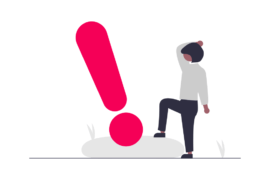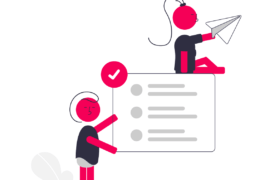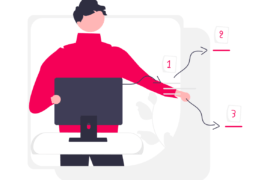WordPress has made it possible for even the most novice of people at web design to build an online presence within minutes. This has made it one of the most widely used platforms used by countless numbers of people. When building an online presence, programs like WordPress can help make life significantly easier. But there is more to think about when building that online presence that will go a long way in helping to improve the results you attain with your newly found website.
Once you have installed the WordPress program onto your web host, it’s time to move toward the real work which is to build a presence that is profitable. Understanding WordPress Optimization is a significant aspect of improving the performance of your website, and will allow you to accomplish two main goals.
These goals are:
• Improve the speed of your website.
• Improved experience for the user.
If you can’t keep people, you can’t convert people. Creating the quickest and smoothest experience of your website is the key to keeping those people, and converting those people into sales.
There are a number of things to consider when developing a strategy for optimizing your WordPress website. It is important to choose the correct theme, consider the plugins you use, and look at the most effective techniques for improving the coding of your website. Small changes can produce incredible results in your ability to have your website load as quickly as possible.
It begins with the theme
Your theme can be a powerful ally in streamlining the process of optimizing your website. Starting with the right  theme can help by correcting code problems, providing advantages in search engine ranking, create a positive user experience, and improve the overall performance and speed of your site. Here the best tips for choosing the right theme from the very beginning.
theme can help by correcting code problems, providing advantages in search engine ranking, create a positive user experience, and improve the overall performance and speed of your site. Here the best tips for choosing the right theme from the very beginning.
- Find a theme that is well coded. The more code that any aspect of your website, including your theme, has will require more time to load in a browser.
- You will want to ensure that the theme you choose has valid W3C Valid HTML code. There are a number of themes available that have already streamlined the process for you by providing standards-based HTML output.
- Choose themes that are simple and minimalistic. A simple theme should ideally load much more quickly than other themes because the size of the files are smaller, there is less coding.
- Be willing to spend the money on a premium theme. The money spent on a premium theme will provide options that aren’t available with a free theme. Premium themes allow for unique customization options that allow you more control more aspects of your website and theme.
Improving the speed of your site
There are aspects of your website and theme that you also need to consider when trying to create the faster website. You need to look at your use of plugins, clean your database, make coding changes, and track the results you accomplish.
Let’s take a look at the best practices for using plugins. Plugins can be a blessing and a curse. They certainly provide features that allow for a significantly improved experience on the users end, but they can also be a huge drain of your resources and loading speed.
1) Find a balance with your use of plugins
Plugins are little pieces of code that provides the use of a specific feature within a specific program. Plugins are capable of accomplishing nearly any task you can possibly wish for, yet those extra pieces of code also contribute to slowing your website down. When adding plugins to your website, it is important to remember that every file that is created to enhance the design of the website will also impact the overall performance. Here are the best practices for creating a balance with your plugins.
- Every person that visits your website creates a demand for information and files. The Javascript, images, and CSS files all require data to be transferred to the users browser, and extra code requires more time. Choosing plugins that require less code will obviously increase the speed of your website.
- A general rule of thumb concerning plugins is the idea that if a particular plugin isn’t absolutely essential, you should get rid of it. Clever features may add a degree of style and awesome looking appearance, but they also slow your website down by adding unnecessary code for the function of your site.
2) Use Cache
A well made cache plugin will help reduce the demand on your server as well CPU memory usage. This plugin will provide cached versions of your web pages. A cache plugin is also one of the most effective methods for increasing your website’s speed. One of the most effective and recommended plugins to automate the process is W3 Total Cache (which we use on this blog as well).
A cache plugin can:
- Improve the overall performance of your website by reducing resource usage.
- Creates browser caching.
- Reduces load time.
- Reduce bandwidth usage, by caching and minification.
3) Optimizing the Database
One of the most powerful techniques for enhancing the speed of your website is to optimize the tables within your database.
The easiest and most efficient methods for accomplishing this goal is to use a plugin designed for this specific reason. WP-Optimizer is one of the most reputable and capable options available. Another option that is considered to work well also is called WP-DB Manager. The advantage that this particular plugin offers the ability to schedule regular database optimizations.
The importance of taking the time regularly to manage your database – be it automatically scheduled or manually – is for the advantage reducing the overhead of required resources. Spam, plugins, pictures, tables, post revisions, drafts, and even posts all require resources. Maintaining the most efficient database using a plugin will significantly improve the performance, resources required, and speed of your website.
4) Optimize your images
By default, WordPress automatically stores all of your uploaded media in the folder labeled wp-content/uploads. In versions of WordPress earlier than 3.5, there is the option to change the locations that you store your images from this default folder. Placing images on a sub-domain is the best option for relocating your images because it allows the system to generate a shorter URL for each image and improves indexing within Google.
The advantages for changing this folder include the ability to shorten the URL of images, improving manageability of daily backups, and will improve the overall speed and performance by reducing the overall page load time. If you have a version of WordPress that is 3.5 or newer, there are plugins available that allow for the return of the function.
Additional tips for improving your image performance.
- Scale your images before you upload them. Avoid simply uploading an image without adjusting its original size. Take the time to change its size to the dimensions you will desire on the website. Changing them within your back office in a post requires additional HTML for the adjustments.
- Use WP Smush It plugin to help smush your images. Smushing removes all unnecessary information that automatically becomes a part of the images data. Many photos come with data about a particular camera used to take a photo, gps coordinates, date of the photo, and other similar information which all requires additional storage and resources to load in a users browser.
- Enable gZIP compression to help improve the speed of not only your images, but also the files required for CSS and Javascript files.
How to use gZIP compression
There is a constant flow of data and information between the server your website is stored on and the server used by your visitors. Enabling gZIP compression creates a ZIP file of the necessary data before sending it to your visitor and ultimately their browser.
Enabling gZIP only takes a few moments and can be done by copying the following code into your .htaccess file which can be found within your root WordPress folder:
## ENABLE GZIP COMPRESSION ##
AddOutputFilterByType DEFLATE text/plain
AddOutputFilterByType DEFLATE text/html
AddOutputFilterByType DEFLATE text/xml
AddOutputFilterByType DEFLATE text/css
AddOutputFilterByType DEFLATE application/xml
AddOutputFilterByType DEFLATE application/xhtml+xml
AddOutputFilterByType DEFLATE application/rss+xml
AddOutputFilterByType DEFLATE application/javascript
AddOutputFilterByType DEFLATE application/x-javascript
## ENABLE GZIP COMPRESSION ##
Use a content delivery network to help improve the performance of your website.
A content delivery network (also known as a CDN) will allow you to improve the overall load time of your website significantly. A CDN works by taking all of the static data within your website such as images, CSS, and Javascript files, and relocates them to multiple servers that are closer to your visitor. This allows for faster downloading of the necessary files which reduces the load time of your pages.
Summary: Wordpress Optimization
We know that the speed of your website is essential for improving the experience of your visitors, your ability to rank in the search engines, conversion rates, the number of pages people view per visit, how often those visitors return, and many other variables. You simply cannot afford to have a slow website. Research has been done to evaluate the overall value of each visitor to a website based on the speed of their internet connection as well as the browsers most commonly used. You can find a fully detailed description of one such example here.
The research shows that people with newer, faster browsers and also have the fastest internet connections spend significantly more per visit to a website than those who use dial up connections and older browsers. We obviously can’t expect people to change their internet connections or browser. This means that the only option available is to optimize your WordPress website in order to maximize the load time of every visitor, regardless of their connection or browser.
Ankit is a co-founder @ AdPushup (a tool which helps online publishers optimize ad revenues) and loves online marketing & growth hacking.




